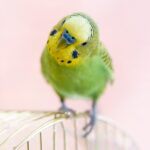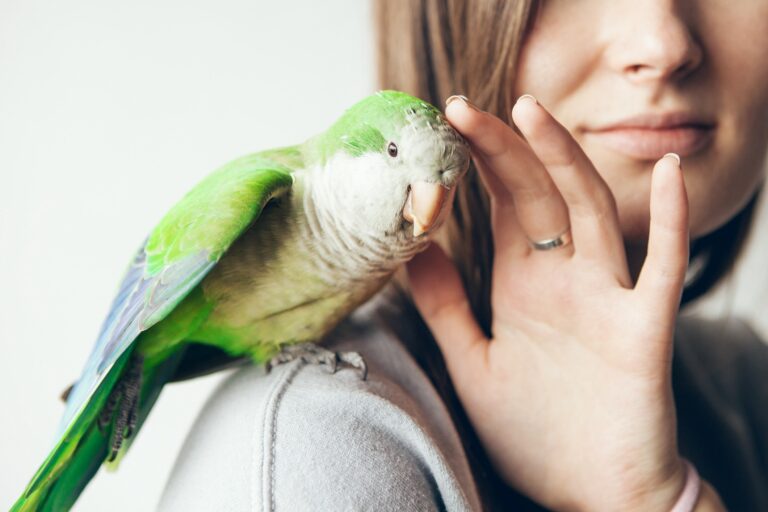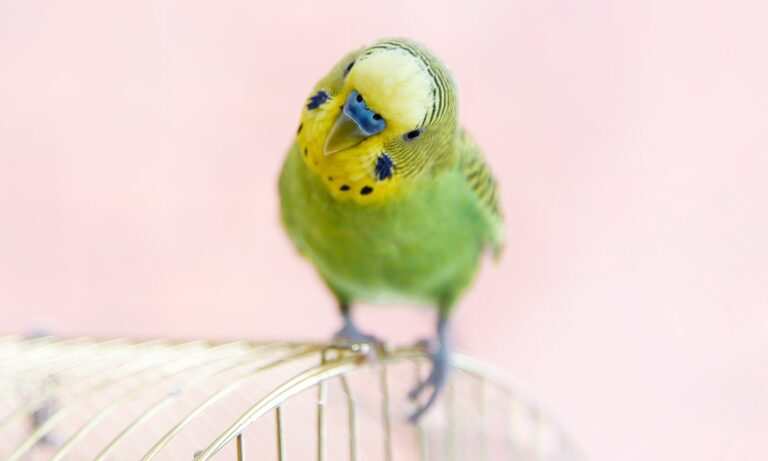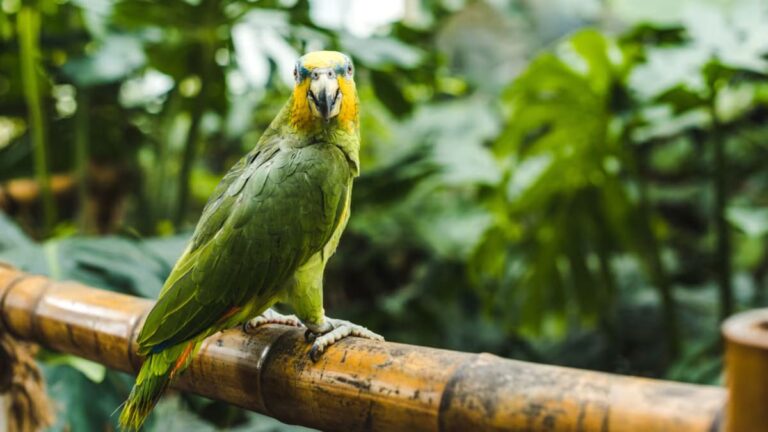Doves as Pets

Photo by Molly NZ/Shutterstock.com
Doves as pets? Yes, doves are kept as pets all over the world. Although some species are not well-suited as pets, requiring advanced management with large and precise environments, other dove species are very well-suited as companion pets. Ring-neckeddoves (Streptopelia risoria) and diamond doves (Geopelia cuneata) are two of the most widely kept species of doves.
Ringnecks are the larger of the two, about the size of the wild mourning dove, averaging 11 inches in total length. Diamond doves are similar to the size of a canary or budgie, averaging 7 1/2 inches in total length.
Ringnecks and diamond doves can be kept as pets in a variety of ways. They can be a single bird, bonded to its owner with or without free flight within the home, or they can be a breeding pair, bonded to one another, producing young. These doves are also well-suited to being kept outdoors all or part of the year.
Dove Care
If you have or have had other species of birds as pets, then you are familiar with the basic needs of doves. In general, they require simple housing, protection from extreme elements, easily accessible food, clean water and some attention. They are usually active from sun up to sun down. They are also vocal, voicing a variety of coos, depending on their mood or needs. And, depending on the amount and type of time you spend with them, they can be affectionate or elusive.
Doves are individuals with differing personalities and a strong need for companionship. They can be shy and timid to bold and aggressive. I have known doves that would sit and preen their owner like a mate, ones that would nap on a pillow next their owner and others that would seek treats within an owner’s pocket.
Doves tend to bond less with their owner if paired with another dove and producing young. However, if given free flight within the home on a regular basis, a bonded pair enjoys interaction with their owner’s routines. They tend not to play with a large variety of bird toys, but they seem to enjoy swings, dangling things like bells and sometimes mirrors.
Doves need a companion for large portions of the day. This can be their owner, another dove of same or opposite sex, other species of birds and even other docile pets. They should not be left alone for long periods of time.
Doves express themselves by cooing. This can be soft and soothing or, depending on their needs, it can also be loud and relentless. But, it is still a “coo,” not a screech, shrill or whistle.
Which Dove?
A general consensus is that the ring-necked dove is the easiest to keep. Being larger, they tend to be a little hardier, can take more extreme temperatures and seem to settle down more easily to their homes and owners. They eat more, are louder in their coo and seem to produce more loose feathers and dander.
Once settled in, ringnecks can be quite prolific if they have a mate, having eight sets of young or so a year if allowed. A particular feather mutation of the ring-necked dove is called silky. It produces a beautiful dove with “lacy” feathers and the inability to fly far. Silkys seem to settle down to their companion very well, making them a great selection for an indoor pet.
Diamond doves are smaller, and perhaps a little less messy. They can be affected by their environment a little more easily. They can be more flighty and can take more effort to settle and bond with. Their coo is quieter than the larger ringneck doves. And, they tend to be a little less prolific, requiring more management to reproduce.
How to House Your Dove
Overall environment is probably the largest factor to deal with when considering doves as pets. Know your area well. If the doves are to be outdoors, note the extremes in temperature, the amount and direction of wind, rain and sun. Beware of local pests and predators. Ringnecks can tolerate cold temperatures and harsher weather, whereas diamond doves cannot. If you are unable to provide protected or even heated areas and your doves cannot be indoors for the colder months, avoid the more delicate and less cold-tolerant species.
If the doves are to be kept indoors, consider the layout of your rooms. Doves can be startled, possibly causing injury. Place the doves’s cage where they can hear and see you approaching. Avoid placing bird cages near doorways or around corners. Also consider artificial, full-spectrum lights on timers. Doves cannot benefit from natural light through glass. The full-spectrum lights, along with fortified feed, help here. The timers provide some routine and can help in managing their reproduction.
Doves are non-destructive meaning they can be kept in wooden or plastic cages, or cages with these materials incorporated within them. Doves do molt or lose and replace their feathers. Regular weekly cleaning and methods of skirting can greatly reduce the spread of feathers or dander. If allowed, doves throw or toss their seeds to find their favorite. Select containers that greatly reduce the spreading of the seeds.
Doves spend a lot of time on the ground, so provide wider cages with plenty of floor space. Non-wired cage bottoms are best for doves.
I find a cage 2 feet tall by 18 inches deep by 30 to 36 inches wide is very well suited for a pair of ringneck or diamond doves. A single nest bowl can be placed high in a corner along with a perch. A second perch should be placed at the opposite end of the cage to encourage flight between bird perches.
Place food and water containers on the ground between the perches. These should be designed so that the dove must reach through an opening to reach the seed, reducing the ability of throwing it about. Water containers should be covered to reduce being contaminated from above. Provide natural, nonpoisonous or artificial ivy or strips of cloth for use around the nest bowl and within the cage for cover.
Many doves spend a great deal of time during the day on the ground, searching for seeds and bathing in the sun. You must provide clean, dry areas on the ground that receive direct sunlight for your doves. Also, if your doves have contact with the natural ground, worm them on a regular basis. Having plants or other cover is equally important within a flight or aviary.
What Doves Eat
When buying doves you must know what the birds are used to eating. It is often too great a shock for doves to completely change their diet, especially when combined with the stresses of changing homes. Be sure to have some of the food they are used to on hand. If you plan to switch diets, do it gradually over a period of time.
A few “all-inclusive” pelleted feeds are available that have been formulated and fortified specifically for seed-eating birds. A variety of pellet sizes are available. Diamond doves require a smaller pellet than the ringnecks. The other option is feeding natural seeds. Most good-quality dove bird food seed mixes are adequate for your doves. Talk to your avian veterinarian about the best food for your doves.
It has been shown that these doves do not need grit to survive; however, many seem to enjoy and benefit from having a small, calcium source, starter grit available at all times. It also helps to mix a little red-fortified mineral salt in with the grit. Fresh water is a must at all times.
Many people like to provide a variety of soft foods as treats or for something different. Doves seem to enjoy steamed rice, multi-grain bread, cornbread, mealworms, chopped fresh vegetables and hard-boiled eggs, crushed shell and all. They may not take to the varied foods at first, but they quickly learn to love them.
The life span of these doves can vary. On average, a ringneck dove lives 12 to 15 years. Some individuals have been known to live into their 20s. Diamond doves seem to average 8 to 12 years.
Ringneck and diamond doves are well-suited as companion pets. They have proven beneficial within assisted-living situations, learning to enjoy being handled by the elderly. They perform well within classrooms with children of all ages. They can learn to perch on their companion’s shoulder and enjoy a little cuddling, preening or play. If given proper housing, care and patience, doves can be an enjoyable, rewarding companion within your home.
Avoid Accidental Escapes
Generally, doves that escape will not be able to survive for long in the wild. Doves can be flighty and fly upward toward open light when startled. If your doves spend all or part of their time in outdoor flights, I recommend building a Man-Trap into the flights design. A Man-Trap is an enclosed area that you walk into and completely close behind you before you open the door to any area holding birds. If a bird does get by you, it can go no farther than the Man-Trap and you can easily retrieve it. If a Man-Trap is just not possible in your situation, lower doors do much better to reduce escapes. Build doors narrow and as low as possible that you can still stoop through.
Doves also seek the highest areas of a coop or flight to roost in. They do not always do what is best for them. Because of this, if the pen has an open wire flight area as well as a covered area for protection, the covered area must be taller inside than the open wire flight. Provide safe perches in the taller areas. If the doves will be outdoors during the winter, use flat perches to force their toes up and under them during freezing temperatures.
Doves rarely breed consistently and well in colonies unless very large areas are provided. If you plan on breeding doves, the second perch should be placed low enough to allow space for the male to mount the female’s back and properly mate. It also becomes difficult to keep accurate records, as nests are often shared by multiple hens. One breeding pair is usually best per cage. Removing older young as other eggs are laid usually works best, as well.
Doves prefer open, basket-style nests that are well hidden. They generally are poor nest builders, so bowls or platforms with edges are very helpful. Place these high in the corners and hidden by some form of cover. Ringneck baskets should be 6 inches in diameter or so, 3 1/2 to 4 inches for diamond doves. Long, flexible pine needles, like white pine, 3 to 4 inches in length make wonderful nesting material. Dried grass also works well. Avoid string or anything that can get wound around the dove’s legs. The young must have material to grab hold of within the nest, or leg problems might occur. Place nesting material in a cage corner.











